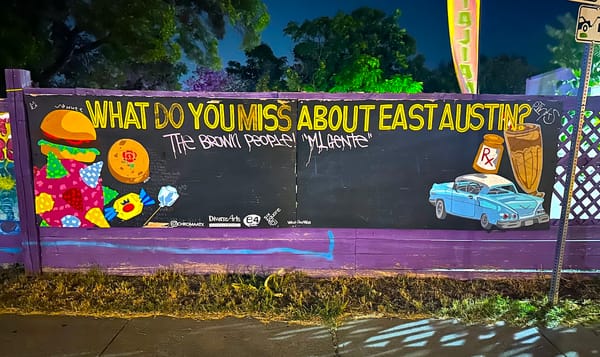start the future: understanding cooperatives

I’m continuing the series where I try creating a new organization that serves a public good. I can be intentional about my goals and work with people who align with these intentions. I’ll start by researching different organization types in the united states.
This is a post about starting a cooperative written by someone who has never started one. I am doing the research, but I’m not a lawyer (spelled it right first try this week). It’s important to me to state this caveat up front.
we’ll revisit my goals from last time.
my organization goals
Here are a few thoughts I have about the type of organization I want to create.
- I want the organization to be worker-led or employee owned
- I want the organization to exist within the community it wants to support
- We’ll use many Teal Organization principles at startup. We’ll be free to adapt our approaches considering a pretty basic “do no harm” principle
- I want the people or teams to function in cooperation or collaboration
- The organization will run without a hierarchy. This does not mean flat or directionless! Everyone has distributed decision-making authority within their area of work. We’d discuss larger decisions as a collective and choose a person to make the decision.
- We’ll use the advice process for all decisions. That means anyone can identify a problem and come together with others to solve it. Consensus is not necessary
- The organization will be explicitly anti-racist
cooperatives (co-ops)—what is it?
Cooperatives are not as plentiful in number as a 501(c)(3) or a standard for-profit organization. Co-ops are also organized in a few different ways to serve different purposes. The University of Wisconsin describes a few:
- Retail or consumer—member owners use the co-op to buy goods or services. Common examples include credit unions and co-op grocery stores.
- Worker—all employees are members of the co-op, which operates as a for-profit business. Employees define the strategic direction and goals of their organization.
- Producer—the members are producers of a common good or service. These co-ops are often run by farmers that all produce one item. Ocean Spray is a famous example of a producer co-op.
- Service or purchasing—members pool their purchasing power to reduce expenses. Cooperative health clinics often use this model. Housing co-ops usually operate as a subtype of service co-ops. Ace Hardware is a cooperative of stores that pool marketing and purchasing power.
- Multiple stakeholders or hybrid—members have a shared stake in a common interest. This could be a combination of any of the above co-op models.
The organization I’m imagining could fall under a few of these models. Consider a food justice focus. If we provided a direct service to the community, we could operate like a low-income consumer co-op. If many direct service providers shared expenses, we’d operate like a service co-op. We could buy our food in bulk and save money. We could also pool expenses, like HR, payroll processing, or insurance. If each organization owned a farm or food vendor, we could share our products with each other. This would be a type of producers co-op. If we wanted to do all these things together, that would be a hybrid co-op.
how do you do it?
Co-ops are somewhat rare compared to other organization types. While I didn’t find many startup guides, several organizations act as co-operative incubators. For instance, the Food Co-op Initiative helps new food co-ops get started. Other incubators help develop the tools a new co-op will need on the way to incorporation. Some even offer startup funds as part of their program.
I also found an interesting guide for someone looking to get started. The writer of this piece also started their own co-op.
In Washington state, I could also consider an LCA. Limited cooperative associations allow for a patron-investor member type. This member can place a significant investment in the co-op. In return, they have a bigger share of the vote than the one-member, one-vote standard. There are ways to regulate an LCA to avoid a patron-investor class that is too powerful. In all honesty, it’s still too risky to give a small number of people a disproportionate vote.
what’s good?
Co-ops offer true worker/member ownership. The members make all organizational decisions. Some elect a board that will make decisions on behalf of the owners. The co-op could also vote on board ideas, or veto decisions they don’t like. I also admire the principles of a cooperative identity. These are from the International Co-operative Alliance.
- Voluntary and open membership. The co-op accepts anyone into membership, with no discrimination.
- Democratic control. Each member receives one vote, regardless of their financial contribution.
- Members contribute equitably. People pay a membership into the co-op. Some co-ops provide payments or dividends to members.
- Autonomy and independence. Co-ops operate without outside influence. Some do enter into beneficial partnerships with other organizations (including non-co-ops). If they choose to do so, they have to maintain their cooperative principles.
- Education, training, and information. Co-ops must train members on how to operate a co-op. They should inform the public of their work and invite them to contribute to the co-op’s goals.
- Cooperation among co-ops. Working with other co-ops helps spread cooperative values. Successful cooperation and education of the public helps spread alternatives to capitalist systems.
- Concern for community. Members serve their community and work within existing local, state, and national structures.
what’s good to avoid?
Starting any organization is difficult, but cooperatives are difficult in a different way. There are fewer books or instructions on how to get started. Some co-op incubators are themselves 501(c)(3)s. The seventh point above tells me that cooperatives adhere to working within institutions. This means they’re also subject to many of the weaknesses inherent in our current system. At REI, for instance, employees are not “members” in the sense of a worker cooperative. Staff may elect a board to run the company, but REI is a for-profit business first. The model will not by itself bring us justice.
Another point is that cooperatives are not tax exempt. They pay taxes like a for-profit or low-profit organization. Some co-ops reduce their tax burden by paying some revenue back to members as a dividend.
Cooperatives operate on a membership basis. No matter your investment, you have an equal share in the business. This makes it difficult to attract traditional investors. Some people, including myself, might consider that an added bonus. That lack of investment potential will make it hard to get started.
In many of the guides I saw, they saw as a negative the way cooperatives make decisions. Democratic decisions slow down the work, as every decision requires a vote. Using Teal organization strategy is enough to dispel some of those fears. At Buurtzorg, the CEO proposes new ideas to a company-wide message board. Nurses in the organization are free to comment, provide feedback, or even veto these plans. Imagine a system where workers upvote or downvote decisions about where we want to go. For a traditional organization led by one leader, this alone could be a dealbreaker for them.
closing thoughts
Before I started this research, I hadn’t thought of a co-op as a viable organization type. In my limited awareness, I only knew of a few consumer co-ops. Worker co-ops felt aspirational to me. My research made it clear to me that this is an organizational model worth exploring further.
I appreciate the focus that cooperatives place on democratic decision-making. A member-owned cooperative could help us better represent the communities we serve. Its structure can help us reject the hierarchies and power imbalances of the world we know.
The benefit and liability of a cooperative is in its name. Non-profits sometimes start their life as one person’s labor of love. Starting a cooperative, and sustaining it, seems to demand a group effort. Non-profits often root themselves into a community after they’re fully formed. Worker cooperatives seem to start from the opposite direction. They can be born from their community: a small group of people, working together as equals, to make their world better. I’m not sure I’ll find a nobler purpose.



